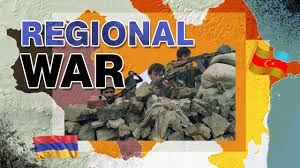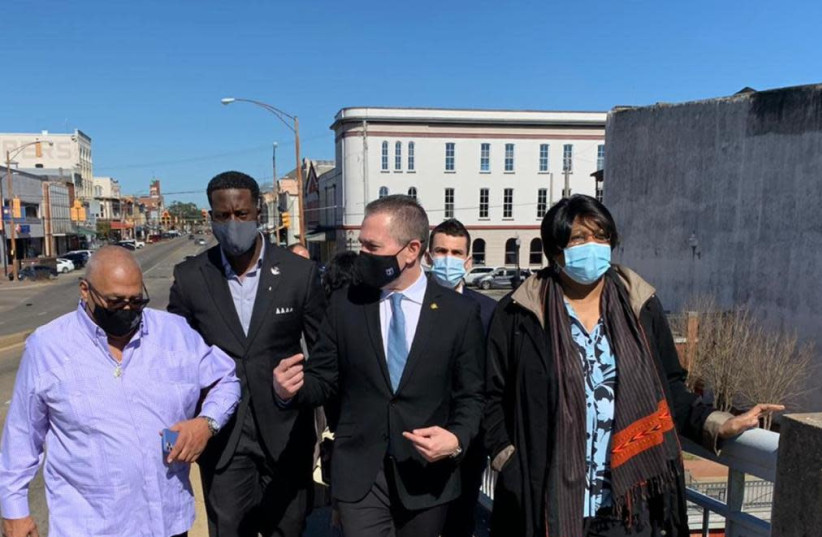
On September 27, a new regional war in South Caucasus arose from the Armenian-Azerbaijani conflict over the contested Nagorno-Karabakh region.
Pro-Armenian forces captured the region in the early 90s triggering an armed conflict between Armenia and Azerbaijan. Further development of the hostilities and the expected offensive by pro-Azerbajian forces were stopped by a Russian intervention in May of 1994. As of September 2020, the Nagorno-Karabakh region and nearby areas are still under the control of Armenian forces, de-facto making it an unrecognized Armenian state – the Republic of Artsakh (more widely known as the Nagorno-Karabakh Republic).
The 2018 political crisis in Armenia the led to a seizure of power in the country by de-facto pro-Western forces led by current Prime Minister Nikol Pashinyan which did not strengthen Armenian positions over the territorial dispute. The double standard policy of the Armenian government, which was de-facto conducting anti-Russian actions but keeping public rhetoric pro-Russian, also played its own role. For years, Russia has been the only guarantor of Armenian statehood and the only force capable to rescue it in the event of a full-scale Azerbaijani-Turkish attack. Nonetheless, the Armenian leadership did pretty well in undermining its strategic partnership with its neighbor.
On the other hand, the political and economic situation in Azerbaijan was more stable. Baku also was able to secure good working relations with Russia. Together with the developing strategic partnership with Turkey, a natural historical ally of the country, and the strengthening of Turkish positions in the Greater Middle East, led to an expected attempt by Azerbaijan to restore control over the contested territories.
The Azerbaijani advance started on in the morning of September 27 and as of September 28, the Azerbaijani military said that it had captured seven villages and several key heights in the Fuzuli and Jabrayil areas. The military also announced that Azerbaijan captured the Murov height of the Murovdag mountain range and established fire control of the Vardenis-Aghdar road connecting Karabakh with Armenia. The Ministry of Defense said that this will prevent the transportation of additional troops and equipment from Armenia along the route in the direction of the Kelbajar and Aghdar regions in Karabakh.
The Azerbaijani Defense Ministry also claimed that over 550 Armenian soldiers were killed and dozens pieces of Armenian military equipment, including at least 15 Osa air defense systems, 22 battle tanks and 8 artillery guns, were destroyed. All statements from the Armenian side about the casualties among Azerbaijani forces were denounced as fake news.
Azerbaijan calls the ongoing advance a “counter-offensive” needed to put an end to Armenian ceasefire violations and to protect civilians. President Ilham Aliyev signed a martial law decree and vowed to “restore historical justice” and “restore the territorial integrity of Azerbaijan” Turkey immediately declared its full support to Azerbaijan saying that it is ready to assist it in any way requested, including military support.
In its own turn, the Armenian military admitted that Azerbaijan captured some positions near Talish, but denied that the Vardenis-Aghdar road was cut off. According to it, at least 200 Azerbaijani soldiers were killed, 30 armored vehicles and 20 drones were destroyed. The Armenian Defense Ministry also said that it has data about Turkish involvement in the conflict, the usage of Turkish weapons and the presence of mercenaries linked to Turkey. Earlier, reports appeared that Turkey was deploying members of its Syrian proxy groups in Azerbaijan. Arayik Harutyunyan, the President of the Nagorno-Karabakh Republic, openly stated that the republic is at war with both Azerbaijan and Turkey.
The Washington establishment that helped Pashinyan to seize power is also not hurrying up to assist its ‘new friends’ in Armenia. They see the Nagorno-Karabakh region as a point of possible conflict between Russia and Turkey (which is useful to promote the US agenda in the Greater Middle East). The instability in South Caucasus, close to the borders of Russia and Iran, also contributes to the geopolitical interests of the United States. Therefore, the Pashinyan government should not expect any real help from the ‘democratic superpower’.
On the other hand, the direct involvement of Russia and thus the Collective Security Treaty Organization on the side of Armenia is unlikely until there is no direct attack on its territory. Moscow would intervene into the conflict both politically and militarily, but only as far as necessary to prevent a violation of Armenia’s borders. Russia would not contribute military efforts to restore Armenian control over Nagorno Karabakh should the region be captured by Azerbaijan.
If the regional war between Azerbaijan and Armenia develops further in the current direction, Armenia could loose at least a part of its positions in the contested region. In the worst-case scenario for the Armenian leadership, Azerbaijan, with help from Turkey, will have a real chance to restore control over the most of the contested Nagorno-Karabakh region.
Related Videos
Related News
Filed under: Armenia, Iran, Russia, Turkey | Tagged: Azerbaijan, Greater Middle East, Karabakh, South Caucasus, Syrian mercenaries, US proxy wars |
Related posts:
Views: 0
 RSS Feed
RSS Feed

















 September 30th, 2020
September 30th, 2020  Awake Goy
Awake Goy 




 Posted in
Posted in  Tags:
Tags: 
















